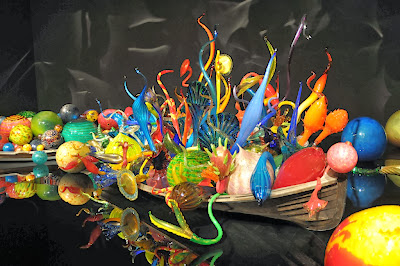
Goodbyes are always poignant and often difficult, especially so when there is an air of finality. Such it was on Saturday, September 20, 2014, when we gathered at the shore to place my mother's ashes into the ocean. Poignant in that it brought back the memories of a similar time fifteen years ago (almost to the day) when Michael and I placed our father's remains into the sea, at very close to the same location. Difficult, because it drives home that finality.
Bittersweet is another word that seems to fit the circumstances. The sweetness was in the gathering of loved ones, of those closest to Mom. It was her immediate family, consisting of her two sons, daughter-in-laws Karen and Carol, grandsons David and Noah, and granddaughter Sabrina. Even our dogs Maya and Nellie were present, which seemed appropriate given Mom's love of animals, especially dogs. No animal would starve in Mom's presence, and they learned to always sit at her feet.
 It was a beautiful morning, and promised to be one of those rare 80-plus degree days at the Oregon Coast. This was a good thing, given that Mike and I would need to wade into the water at least up to our knees...and the ocean is not warm even in late summer. The surf was high and the waves crashed hard. There were a few surfers taking advantage of the high waves. A mist formed over the turbulent water and drifted over the beach.
It was a beautiful morning, and promised to be one of those rare 80-plus degree days at the Oregon Coast. This was a good thing, given that Mike and I would need to wade into the water at least up to our knees...and the ocean is not warm even in late summer. The surf was high and the waves crashed hard. There were a few surfers taking advantage of the high waves. A mist formed over the turbulent water and drifted over the beach.Mom loved Seaside. It reminded her of her hometown of Scheveningen, a small town on the North Sea that was formerly a fishing village but later became a resort town, much like Seaside. Both towns even have a promenade that separates the sand from the hotels, houses, stores and restaurants. It was just a few weeks ago that she rode her wheelchair along the promenade with her sister Leny, brother-in-law Bill and niece Lucy.
I had some words I wanted to share. I wanted to say something profound that honored the moment and a beautiful life that was fully lived. Yet in the end I was too choked up and my brother and I simply started walking to the water's edge, carrying the bag with the ashes. As expected, the water was cold. What we did not expect was how fast the water retreated, and we ended up needing to walk quite a distance in order for the water to be deep enough. Mike grabbed a handful to place as I held the bag. We wanted to do it with a degree of reverence and solemnity, but it seems Nature, and perhaps Mom, had other ideas. A series of large waves come upon us, drenching us up to our waists, and the process of disposal became rather accelerated. Even David, who was several feet closer to shore became wetter than expected (and he didn't wear shorts!). We both cried out "Thanks, Mom. We love you!", rinsed the bag and quickly slogged our way back to shore. Mike commented that the ocean made sure Mom was taken to be with Dad. I could see our mother smiling and laughing at our efforts. Such was her humor.
The tears flowed as we walked onto the beach and we hugged each other...first Mike and I, then our children and wives. It was beautiful.
Thank you again, Mom. Our memories are not of the last weeks but of the many years you devoted to us. You will be missed, but I think you will always be with us.
Links to previous posts about Mom and Dad:
http://musingsbypaul.blogspot.com/2013/05/thoughts-on-mothers-day-2013.html
http://musingsbypaul.blogspot.com/2013/05/thoughts-on-mothers-day-2013.html
http://musingsbypaul.blogspot.com/2012/08/a-life-well-lived.html
http://musingsbypaul.blogspot.com/2008/10/moment-at-edge-of-eternity.html
http://musingsbypaul.blogspot.com/2008/10/moment-at-edge-of-eternity.html






























